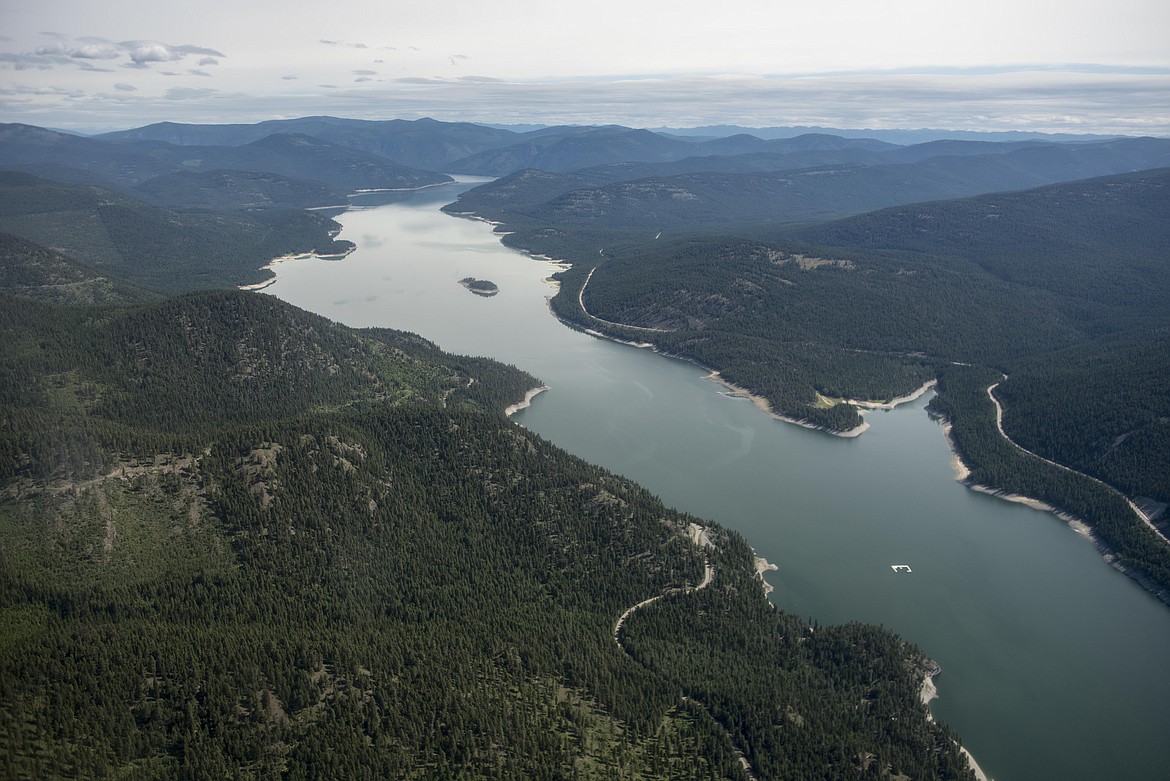Mine water treatment could offer new solution
A pilot project undertaken by the international corporation Teck Coal Limited may be showing promise as a better long term solution for dealing with contamination from mine runoff.
In 2017, Teck opened their first full-scale saturated fill project, according to an email from Chris Stannell, a senior communications specialist with Teck.
Stannell said the company expects to invest between $850 and $900 million between 2018 and 2022 into water treatment, which includes water treatment plants in the watershed leading to the Kootenai river.
But the new process, which uses bacteria to remove contamination in the mine tailings before any runoff has entered the watershed, is working well, according to a May 2019 release from Teck.
If the project is successful, Teck will be the first company in the world to have explored and implemented the approach.
The Teck release states that the saturated rock fill facility at Teck Elkview Operations has achieved near-complete removal of selenium and nitrate from 2.6 million gallons of mine-affected water per day since January of last year.
According to a video from Teck explaining saturated fill, waste rock is returned to the coal pits left after mining and the rock material is allowed to saturate with water. Similar to the biological process in Teck’s treatment plants, bacteria within the rock pile without access to oxygen to produce carbon dioxide instead create compounds from nitrates and selenium as part of their metabolic process.
The resulting compounds are not soluble, and should not be able to leach into groundwater, according to a spokesman in the video.
“While both water treatment facilities and saturated fills use a biological treatment process, there are many potential benefits to saturated fills, including shorter schedule for design and construction, reduced complexity, and no leftover materials from the treatment process requiring storage,” Stannell said in 2018.
According to the May 2019 release, Teck is now pursuing a second phase that could double the capacity of the saturated rock fill facility, allowing the treatment of 5.3 million gallons of water per day.
“Going forward, work on the SRF will focus on proving out the results of the Elkview facility and working towards potential broader implementation of SRFs,” the release states.
Background
Coal mining in the Elk River area just north of the U.S. border with Canada has been going on for over 100 years, but in 2013 the B.C. Ministry of the Environment issued a ministerial order to Teck Coal Limited identifying selenium, cadmium, nitrate and sulphate as contaminants of concern in the Elk Valley.
The order required Teck to establish a technical advisory committee and to create a water management plan for the Elk Valley, an area identified as running from the headwaters of the Elk River to the U.S. border.
In July 2014, Teck submitted the plan to the ministry for approval.
University of Montana Senior Research Scientist Erin Sexton — who with Professor of Systems Ecology Ric Hauer first broke the news over the effect of selenium contamination on Montana wildlife — was involved in the creation of that plan, she said.
“They basically got permission for the water quality trends to continue to go in the wrong direction while they try to figure out this problem,” she said.
Sexton said that Teck is not ignoring the problem, but that she and others involved in the creation of the plan felt that Teck was able to limit the options it considered based on economics.
“I think Teck has every intent, if they’re able, of implementing a longer term solution, but the problem is that when the Elk Valley Water Plan was approved, they made choices at the very front end of those meetings that basically threw out certain options in the short term because they deemed them too expensive,” she said.
In the British Columbia process, economic and environmental feasibility are weighed equally, she said.
Sextin said that the key problem is not whether or not Teck is doing something, or even whether the technologies they are exploring might work. The problem lies with the British Columbia process and that the provincial government allowed Teck to move forward with current and expanded operations without proving first that their solution would work.
“They had a really important point in time when they could have said, ‘OK, we’re going to press pause, we’re not going to approve the expansion of these mines, and we’re going to wait until you guys demonstrate the technology to mitigate,’” she said.
There is no dispute among parties that selenium contamination in particular is still a concern.
However, while Montana has a limit on selenium in lakes and rivers of 5 micrograms per liter (.005 mg/l), and Teck’s plan addresses attempts to meet the British Columbia limit of 2 micrograms, the U.S. EPA limit of 1.5 micrograms comes closer to what some studies indicate is needed, Sextin said.
Selenium contamination is further complicated by the fact that the impacts based on concentration are still being studied.
Sexton said that in places such as Lake Koocanusa where the water isn’t flowing through quickly, much lower levels may produce the same detrimental effects — such as deformation and reproduction interference and potential collapse — as higher levels would in the river.
In addition, while Teck’s approaches have yet to prove they can prevent increases in contamination or keep contamination beneath British Columbia’s mandates, the contamination from Teck’s facilities is accounting for the entire permitted “load” on the Elk Valley watershed, she said.
As a result, if another company with a proven technology were to try to open up a mine in the same watershed, they could potentially be kept from starting operation if they were not allowed to add to the load, she said.

